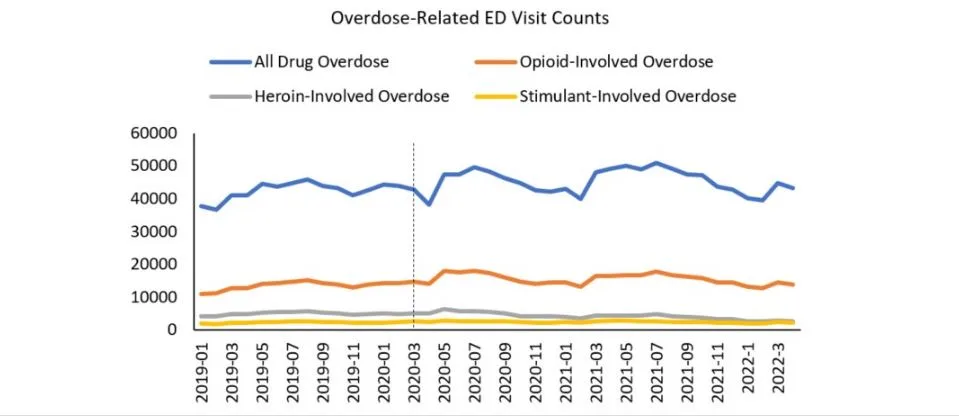Ottawa – The co-chairs of the federal, provincial, and territorial Special Advisory Committee on Toxic Drug Poisonings—Dr Theresa Tam, Canada’s Chief Public Health Officer, and Dr Yves Léger, New Brunswick’s Acting Chief Medical Officer of Health—issued the following statement on the release of the latest surveillance data on opioid and stimulant-related harms in Canada from January 2016 to December 2023.
The latest national data show that the number of opioid-related deaths, hospitalizations and emergency service responses in 2023 were comparable to what we saw during the pandemic. Opioid-related deaths and harms rose dramatically in 2020, and have been high since then. Since 2016, there have been 44,592 opioid-related deaths. From January to December 2023, there were a total of 8,049 opioid-related deaths in Canada, which represents an average of 22 lives lost every day.
Looking forward, an updated simulation model suggests that under some scenarios, opioid-related deaths may remain high or increase through to December 2024. We need to continue making every effort to address this crisis. The renewed Canadian Drugs and Substances Strategy outlines the Government of Canada’s plan to address the overdose crisis and other substance use harms, and includes actions to support both public health and public safety.
A dangerous illegal synthetic drug supply is driving this devastating public health crisis in Canada. Powerful drugs like fentanyl and other emerging synthetic opioids are flooding the illegal drug supply. This has contributed to an increasingly unpredictable toxic drug supply that is more deadly for people who use substances.
A new report shows that the most common combination of substances identified in apparent opioid toxicity deaths between 2018 and 2022 were fentanyl with methamphetamine, cocaine or other psychoactive substances. Multi-substance poisonings can be more toxic and more difficult to treat than those involving a single substance. These insights help inform our understanding and response to the toxic drug supply and patterns of use.
Increasing public awareness about where to find help
Because of the toxicity of the drug supply, deaths and harms are not only limited to those who regularly use drugs, or struggle with addiction; people using drugs for the first time are also at risk.
We can all help by recognizing the signs of an overdose, carrying naloxone and knowing how to use it. Take-home naloxone kits are available at some pharmacies without a prescription, depending on the province or territory.
The Government of Canada also recently re-launched the Ease the Burden campaign which shares the message that “it takes strength to ask for help”, and promotes resources for men working in trades who are struggling with substance use and addiction.
Jurisdictions across Canada are taking steps to address this crisis. Together we can raise awareness of all the tools, resources and supports that are available for those looking for help. Visit Get Help with Substance Use for more information and resources for people who need help with substance use, available both nationally and in your province or territory.
Data is critical to understanding the scope of this public health crisis, and how it is shifting over time. Working together, we can measure the results of our actions and build the evidence base on what works. This will enable us to adjust and tailor our responses to make a difference and save lives.
Dr Theresa Tam, Chief Public Health Officer of Canada, Co-chair, Special Advisory Committee on the Epidemic of Opioid Overdoses
Dr Yves Léger, Acting Chief Medical Health Officer, New Brunswick, Co-chair, Special Advisory Committee on the Epidemic of Opioid Overdoses









